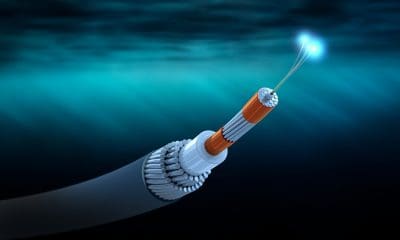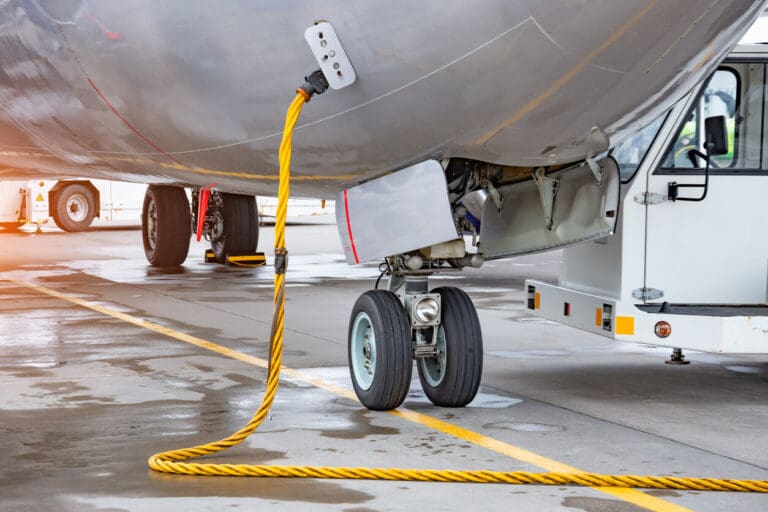
Are Motorsport Cables the Hidden Upgrade Behind Faster Lap Times?
Motorsport teams chase marginal gains in every area of the car, yet many still treat...
Read More
Now the world is more interconnected than ever before, but this global communication network wouldn’t be possible without an often-overlooked technological marvel: submarine cables. These underwater cables, which stretch across oceans and connect continents, are the backbone of global communication, supporting everything from internet traffic to international financial transactions. As demand for faster, more reliable communication grows, submarine cable innovations are playing a critical role in ensuring that our connected world continues to thrive.
Submarine cables are what make the internet and telecommunications possible. While satellite technology also plays a role, around 99% of international data traffic is carried by submarine cables. These cables provide high-capacity, low-latency communication links between countries and continents, enabling everything from email and social media to cloud computing and video streaming.
Unlike the more widely known terrestrial cables that run across land, submarine cables traverse the ocean floors, often hundreds or even thousands of miles underwater. They are typically made up of multiple fibre-optic strands that transmit data using light signals, offering a much faster and more reliable connection than traditional copper wires or satellite links.
In today’s digital world, the need for fast, secure, and efficient data transmission is essential, which is why innovations in submarine cable technology are so important to meeting the growing demand for global connectivity.
As the digital economy continues to expand, so does the demand for faster and more reliable connections. To meet these needs, submarine cable manufacturers and engineers are constantly pushing the boundaries of what’s possible. Here are some of the key innovations shaping the future of submarine cables:
The demand for data is growing at an exponential rate, driven by advances in technologies such as 5G, cloud computing, and the Internet of Things (IoT). To handle this increase, submarine cables have evolved to support much higher data throughput. New cables can now carry terabits of data per second, vastly improving bandwidth and ensuring that networks can cope with growing global traffic.
One of the most exciting innovations in this space is the use of multiple fibres in submarine cables, with some systems now featuring up to 24 fibre-optic strands. This allows for even more data to be transmitted simultaneously, significantly boosting capacity and providing redundancy in case of cable damage or failure.
Traditional submarine cables rely on repeaters—signal amplifiers placed along the cable’s length to maintain signal strength over long distances. However, these repeaters can add cost, complexity, and potential points of failure to the system. The next generation of submarine cables is moving towards repeaterless designs, which use advanced optical technologies to maintain signal integrity without the need for these amplifiers.
By eliminating repeaters, these cables reduce both the cost and maintenance requirements of laying and operating submarine cable systems. The reduced complexity also allows for faster installation and greater flexibility in deploying cables to meet increasing demand.
With sustainability becoming an increasingly important focus across all industries, submarine cable manufacturers are also looking for ways to make their products more eco-friendly. The materials used in submarine cables are evolving to reduce environmental impact. Manufacturers are exploring ways to make cables more energy-efficient, using recyclable materials, and reducing the carbon footprint of production and installation.
Additionally, innovations like power-supply cables and hybrid cables—which integrate power and communication functions in a single cable—are contributing to more energy-efficient operations for the global network. These developments help improve the overall environmental footprint of global communications infrastructure, supporting the transition to a greener, more sustainable internet.
Submarine cable systems are not only vital for established economies but also play a crucial role in connecting developing and emerging markets. As more countries seek to improve their digital infrastructure, submarine cables are critical to bridging the digital divide and enabling access to global markets.
In regions such as Africa, Southeast Asia, and parts of Latin America, new submarine cables are being deployed to enhance connectivity, drive economic development, and provide better access to educational, healthcare, and business services. For example, the 2Africa project is one of the largest submarine cable projects in history, connecting over 23 countries across Africa, the Middle East, and Europe. This will greatly enhance internet speeds and reduce costs for millions of people in underserved regions.
By connecting underserved regions with the global network, submarine cables play a vital role in expanding the reach of digital services and supporting economic growth worldwide.
One of the most significant advantages of submarine cables over satellite connections is their ability to provide low-latency communication. Latency refers to the delay in data transmission, which is particularly important for real-time applications such as video conferencing, gaming, and financial trading.
Recent innovations in submarine cable design are focused on further reducing latency. By carefully optimising cable routes and using more direct paths between key locations, engineers can reduce the time it takes for data to travel between regions. Additionally, the use of new materials and improved fibre-optic technology ensures faster, more efficient transmission of data, helping to reduce latency and improve overall network performance.
As we look to the future, the role of submarine cables will only continue to grow. With the global reliance on high-speed internet, the deployment of new cables will be crucial to supporting the rise of next-generation technologies such as 5G, artificial intelligence (AI), and virtual reality (VR). Here are some exciting prospects for the future of submarine cables:
Submarine cables are a vital component of the global communication network, connecting continents, enabling the digital economy, and driving technological progress. With continuous innovations in cable technology, such as higher capacity, reduced latency, and sustainability efforts, submarine cables are set to support the growing demand for connectivity in the future. As industries like 5G, cloud computing, and IoT continue to expand, these innovations will play a crucial role in building the next generation of global communications infrastructure.
In short, submarine cables aren’t just connecting continents—they’re connecting the world in ways that will power the future of communication, technology, and global business for generations to come.

Motorsport teams chase marginal gains in every area of the car, yet many still treat...
Read More
The wiring harness is a high-risk single point of failure in any complex system. If...
Read More
The wiring harness is the highest risk, lowest profile element in flight-critical infrastructure. When your...
Read MoreReady to talk cables, fibre or full network solutions? Get in touch with our team today, we’re here to help.